 August 5, 2021 John E. Ross, KD8IDJ, Editor
| ||||||
Bouvet Island DXpedition Negotiating with New Charter Vessel, Planning Begins Anew The Intrepid-DX Group's plans for a 2023 DXpedition to Bouvet Island are on the front burner again. In a brief announcement to the "global DX community," DXpedition co-leader Paul Ewing, N6PSE, said this week that a new charter vessel contract is in the offing. The 3Y0J DXpedition has refunded all donations to its earlier announced plan, advanced before losing its contract with the charter vessel Braveheart, and Ewing said this week that the team has found a suitable and affordable vessel whose skipper is willing to take a group of a dozen DXers to Bouvet, and they are negotiating the terms of that charter contract at present. "We have submitted a new application to the Norwegian Polar Institute," Ewing said. The team leadership has been revised. David Jorgensen, WD5COV, will be a co-leader, responsible for operations and antennas, while Kevin Rowett, K6TD, will be a co-leader, responsible for systems/networks, procurement, and logistics, and Ewing as a third co-leader, will oversee planning, public relations, tents, and logistics. "Together, this leadership team will assemble 12 operators to make this vision a reality," Ewing said. "We are revising our website, and soon, we will begin fundraising for this renewed effort." He expressed gratitude for all past sponsors of the Bouvet Island DXpedition initiative and said he hopes they can support the renewed effort as well. A new website is under construction. A dependency of Norway, Bouvet is a subantarctic volcanic island in the South Atlantic. ARRL Now Provides Free RF Exposure Calculator The FCC has adopted guidelines and procedures for evaluating environmental effects of RF emissions. Under the new FCC rules, some amateurs need to perform routine The FCC guidelines already incorporate two tiers of exposure limits based on whether exposure occurs in an occupational or "controlled" situation, or whether the general population is exposed or exposure is in an "uncontrolled" situation. To make this easy for amateurs, ARRL now provides an RF exposure calculator on its RF Exposure page. To use the calculator, enter your transmit peak-envelope power (PEP) and operating mode, and answer the questions about the maximum amount of time you might be transmitting. The calculator will give you the minimum distance people must be from your antenna and human exposure. You can print the results and keep them in your station records. There is no requirement to send your results to the FCC. ARRL Podcasts Schedule
The On the Air and Eclectic Tech podcasts are sponsored by Icom. Both podcasts are available on iTunes (iOS) and Stitcher (Android), as well as on Blubrry -- On the Air | Eclectic Tech New Release: More Arduino for Ham Radio The new book More Arduino for Ham Radio by popular author and experimenter Glen Popiel, KW5GP, builds on the success of his two previous titles, Arduino for Ham Radio and More Arduino Projects for Ham Radio. More Arduino for Ham Radio introduces many of the new Arduino boards and add-on modules, followed by an overview of the software, tools, and techniques needed to bring projects to life. These concepts That's part of the fun of the Arduino and open-source communities -- building on the work of others, and then sharing your designs and innovations for others to learn, modify, and improve. More Arduino for Ham Radio is available from the ARRL Store or your ARRL Dealer. (ARRL Item No. 1472), ISBN: 978-62595-147-2, $39.95 retail, special ARRL Member Price $34.95). Call (860) 594-0355 or, toll-free in the US, (888) 277-5289. Utah Amateur Radio Club Receives Nearly $18,000 Grant to Introduce and Engage Youth The Bridgerland Amateur Radio Club in northern Utah has received a nearly $18,000 grant from the nonprofit Amateur Radio Digital Communications (ARDC) to fund the club's initiatives to engage and educate youth in amateur radio through hands-on space science activities.
In July 2019, ARDC announced that it would use the proceeds from its sale of some 4 million unused consecutive AMPRNet internet addresses to fund its operations and to establish a program of grants and scholarships to support communications and networking research -- with a strong emphasis on amateur radio. Bridgerland ARC has set out an 18-month timeline of proposed activities, which would include an Amateur Radio on the International Space Station (ARISS) contact between students in a local school and a member of the ISS crew, hands-on workshops to build and launch a high-altitude balloon and amateur radio payload, and youth-oriented hands-on operating events. "Where local schools do not have the equipment to make this a possibility, the Bridgerland Amateur Radio Club is prepared to set up and maintain a portable ground station and provide the expertise to help [schools] make ISS contacts." The initiative would also provide educational and enjoyable hands-on activities. A component of this initiative would include training local radio amateurs to use the ground station equipment to prepare them to mentor students and apply the necessary skills to help run the activities.
AMSAT is Looking Forward and Dreaming Big Earlier this year, the AMSAT Board of Directors adopted a set of strategic satellite objectives and organizational goals for 2021 - 2035. The plan, adopted in early June and published for members to see in the May/June 2021 edition of The AMSAT Journal, establishes what AMSAT describes as "a long-term, multi-faceted vision that includes big dreams, a continued presence in space, and a development path for the scientists, engineers, and operators of tomorrow." "Anything this ambitious will undoubtedly challenge our limited human and fiscal resources," remarked AMSAT President Robert Bankston, KE4AL. "We must parallel our new plan with new ways to manage and
fund projects. AMSAT has a pool of very talented volunteers, but there will be times when we require skills beyond our current capabilities. Recruitment, partnerships, collaborative efforts, and even outsourcing are options that will help us fill in the gaps." The list of long-range satellite objectives includes putting amateur radio spacecraft into highly elliptical orbit (HEO). According to The AMSAT Journal, this entails developing and deploying "a series of satellites capable of providing wide-area and continuous coverage from highly elliptical and geostationary transfer orbits." This means satellites in HEO will be readily accessible, or at least accessible for longer periods. The GOLF (Greater Orbit, Larger Footprint) initiative has a similar, but less lofty, objective. The GOLF program intends to field a series of increasingly capable spacecraft "through a program to learn skills and systems for which we do not yet have the necessary low-risk experience, including active attitude control, deployable/steerable solar panels, [and] radiation tolerance for commercial off-the-shelf components in higher orbits and propulsion." As an Amateur Radio on the International Space Station (ARISS) partner, AMSAT would work with ARISS and ARISS-USA "to advance amateur radio's presence aboard the International Space Station" and beyond, to the Deep Space Gateway and Artemis missions, which AMSAT will continue to embrace low-Earth orbit (LEO) satellite projects. AMSAT's strategic plan calls for the organization to support "a stream of LEO satellites developed in cooperation with the educational community and other amateur radio satellite groups." FM voice 1U CubeSats in LEO would continue to be a part of the mix. Other objectives call on AMSAT to develop a plug-and-play communications solution for educational and other amateur radio CubeSat programs, providing a VHF/UHF telemetry beacon, command receiver, and linear transponder or FM repeater communications module. AMSAT also aims to support science, technology, engineering, and mathematics (STEM) initiatives and training programs for satellite and ground system designers and operators. In the same vein, AMSAT hopes to develop an educational outreach program that encourages youth to pursue STEM interests in space science and communication technology, continue development of AMSAT's CubeSat Simulator Program, and develop a program to support and sponsor the use of amateur radio in high-altitude balloon (HAB) launches. CQ World Wide DX Contests to Include Youth Overlay Effective this fall, the CQ World Wide DX Contests (CQ WW) will offer a new Youth overlay, available to all competitors who are 25 years old or younger, as of the dates of the events. The Cabrillo overlay format will be CATEGORY-OVERLAY: YOUTH. To support this change, Youth overlay entries will be highlighted in the results, as is now done in the CQ WW has also established a new Explorer category to allow amateurs to participate in the CQ WW Contest while experimenting creatively with internet-linked stations and other developing technologies. The goal is to encourage innovation in operating strategies, station design, and technology adaptation. CQ WW Contest Director John Dorr, K1AR, reminds participants that audio recordings may be requested for your entry as part of the log-checking process. Any single operator entrant competing for a top five finish at the world, continent, or US levels -- including Classic Overlay -- must record the transmitted and received audio, as heard by the operator for the duration of the contest operation. Failing to respond to this request may result in your log being reclassified or disqualified. "The combination of embracing new technology as well as recognizing the youth community among us is going to make CQ WW an even more popular event," Dorr said. "My thanks go out to the CQ WW Contest Committee and others who helped make this happen." ARRL Learning Network Webinars Visit the ARRL Learning Network (a members-only benefit) to register, check on upcoming webinars, and to view previously recorded sessions.
An introductory overview of digital voice (DV) technologies for ham radio. This presentation will focus on DMR with notes on System Fusion, D-STAR, and more. Included will be a description of DV architecture and components, and the interesting opportunities and challenges that DV presents. ARRL members may register for upcoming presentations and view previously recorded Learning Network webinars. ARRL-affiliated radio clubs may also use the recordings as presentations for club meetings, mentoring new and current hams, and discussing amateur radio topics. The ARRL Learning Network schedule is subject to change. Amateur Radio in the News ARRL Public Information Officers, Coordinators, and many other member-volunteers help keep amateur radio and ARRL in the news.
Share any amateur radio media hits you spot with us. Announcements
Faith Hannah Lea, KD3Z, is Amateur Radio Newsline 2021 Young Ham of the Year ARRL member Faith Hannah Lea, KD3Z, of Palm Coast, Florida, has been selected as the 2021 Bill Pasternak WA6ITF Memorial Amateur Radio Newsline Young Ham of the Year. Faith Hannah comes from an all-ham family. She is the daughter of James Lea, WX4TV, and Michelle Lea, N8ZQZ. Her brother and two sisters are also hams. She credited her parents with being the biggest influences in her entry into amateur radio at the age of 10 in 2014. Just 18 months after being licensed, Faith Hannah "And that's when I realized especially that DXing is amazing, because I absolutely love those huge pileups and getting to talk to all of those different people," she explained. Among her PJ6 achievements was a satellite contact that broke the SO-50 distance world record. Her account of the event appeared in the March/April 2017 issue of The AMSAT Journal. In August 2018, Faith Hannah took part in the week-long Youngsters on the Air (YOTA) camp in Johannesburg, South Africa, where she participated in kit building, antenna projects, satellite operation, and a high-altitude balloon launch. An article about her experiences in South Africa appeared in CQ Magazine. On the way to South Africa, Faith Hannah and her father had a 22-hour layover in Dubai, the United Arab Emirates. While there, they were invited by the Emirates Amateur Radio Society to visit and operate A62A and A60YOZ. In December 2018, Faith Hannah, her younger sister, Hope, ND2L, and their father organized a 36-hour mini DXpedition to the Dry Tortugas in the Gulf of Mexico, off the southwest coast of Florida, where they operated as N4T. The family team put 1,970 HF contacts and 100 satellite contacts into the log. CQ published Faith Hannah's account of the N4T operation, and she and Hope shared the April 2019 cover of the magazine. Faith Hannah earned an associate degree from Daytona State College at age 15 and currently attends Stetson University in Deland, Florida, where she is a member of the junior class. She maintains a 4.0 grade point average while working toward two separate bachelor's degrees -- in molecular and cellular biology and business administration. She is considering two possible career tracks -- medicine or law, or possibly both. In Brief...
Getting It Right! An item in the July 29 edition of The ARRL Letter, "ITU-R Working Party Considers Preliminary Studies on 23-Centimeter Band," should have said the issue primarily concerns ITU Region 1. The item in the July 29 edition of The ARRL Letter, "More Slow-Scan TV Transmissions from RS0ISS Scheduled," should have said that free SSTV software is available for download. The K7RA Solar Update Tad Cook, K7RA, Seattle, reports: During the July 29 - August 4 reporting week, solar activity went into a sharp decline.
Predicted solar flux is 72 on August 5 - 6; 70 on August 7 - 12; 75 on August 13 - 14; 76 on August 15 - 16; 75 and 74 on August 17 - 18; 72 on August 19 - 31; 74 on September 1, and 75 on September 2 - 10. Predicted planetary A index is 8, 12, 8, and 8 on August 5 - 8; 5, 10, and 8 on August 9 - 11; 5 on August 12 - 15; 10, 8, and 8 on August 16 - 18; 5 on August 19 - 22; 8, 12, and 8 on August 23 - 25; 5 on August 26 - 31; 12 and 10 on September 1 - 2, and 5 on September 3 - 11. Sunspot numbers for July 29 - August 4 were 0, 0, 0, 0, 13, 15, and 14, with a mean of 6. The 10.7-centimeter flux was 75.8, 75.5, 75.9, 74.9, 74.6, 75.9, and 70.8, with a mean of 74.8. Estimated planetary A indices were 8, 6, 6, 4, 17, 10, and 5, with a mean of 8. Middle latitude A index was 12, 6, 6, 4, 13, 15, and 5, with a mean of 8.7. A comprehensive K7RA Solar Update is posted Fridays on the ARRL website. For more information concerning radio propagation, visit the ARRL Technical Information Service, read "What the Numbers Mean...," and check out this Propagation Page. A propagation bulletin archive is available. For customizable propagation charts, visit the VOACAP Online for Ham Radio website. Share your reports and observations. Just Ahead in Radiosport
Upcoming ARRL Section, State, and Division Conventions Some conventions and hamfests may have been canceled or postponed due to the coronavirus pandemic. Check the calendar of canceled events on the ARRL website.
Find conventions and hamfests in your area.
ARRL -- Your One-Stop Resource for
Subscribe to...
Free of charge to ARRL members...
| ||||||
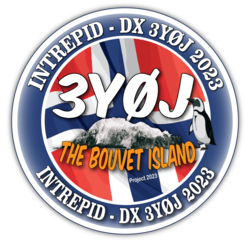 Ewing conceded, "there was a high degree of uncertainty that we could move forward." Braveheart captain Nigel Jolly, K6NRJ, told the DXpedition in June that the Braveheart was being put up for sale, and he was canceling its contract for the 3Y0J voyage.
Ewing conceded, "there was a high degree of uncertainty that we could move forward." Braveheart captain Nigel Jolly, K6NRJ, told the DXpedition in June that the Braveheart was being put up for sale, and he was canceling its contract for the 3Y0J voyage.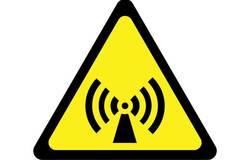 station evaluations to ensure that their stations comply with the RF exposure rules. This can be as simple as running an online calculator to determine the minimum safe distance between any part of your antenna and areas where people might be exposed to RF energy from your station. Although amateurs can make measurements of their stations, evaluations can also be done by calculation.
station evaluations to ensure that their stations comply with the RF exposure rules. This can be as simple as running an online calculator to determine the minimum safe distance between any part of your antenna and areas where people might be exposed to RF energy from your station. Although amateurs can make measurements of their stations, evaluations can also be done by calculation..jpg) The latest episode of the On the Air podcast (Episode 19) features a discussion with ARRL Lifelong Learning Manager Kris Bickell, K1BIC, about the launch of the new ARRL Learning Center.
The latest episode of the On the Air podcast (Episode 19) features a discussion with ARRL Lifelong Learning Manager Kris Bickell, K1BIC, about the launch of the new ARRL Learning Center..jpg) The latest edition of Eclectic Tech (Episode 39) begins with a chat about "rediscovering" receive audio filters. This is followed by a conversation with Bryant Julstrom, KC0ZNG, about his ac dummy load that appeared "Hints & Hacks" in the July 2021 issue of QST.
The latest edition of Eclectic Tech (Episode 39) begins with a chat about "rediscovering" receive audio filters. This is followed by a conversation with Bryant Julstrom, KC0ZNG, about his ac dummy load that appeared "Hints & Hacks" in the July 2021 issue of QST.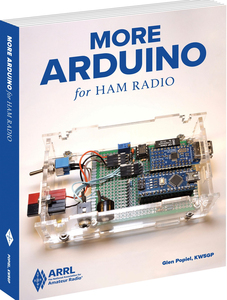 are put to work in 10 practical projects that showcase a wide variety of applications and include detailed descriptions of how the software "sketches" work. Each is complete as-is, with ideas for adding your own personal touches or creating your own projects using the techniques and modules presented.
are put to work in 10 practical projects that showcase a wide variety of applications and include detailed descriptions of how the software "sketches" work. Each is complete as-is, with ideas for adding your own personal touches or creating your own projects using the techniques and modules presented. "This grant and our Bridgerland Amateur Radio Club demonstrate the important role amateur radio can play in furthering STEM education, which is critical to continuing Utah's high-tech economy," said Utah Section Manager Pat Malan, N7PAT, who came into office on July 1. Malan said prime movers behind the grant initiative included Jason Peterson, K7EM; Club President Ted McArthur, AC7II, and Club Secretary Kevin Reeve, N7RXE. Malan just appointed Reeve as the Section Youth Coordinator.
"This grant and our Bridgerland Amateur Radio Club demonstrate the important role amateur radio can play in furthering STEM education, which is critical to continuing Utah's high-tech economy," said Utah Section Manager Pat Malan, N7PAT, who came into office on July 1. Malan said prime movers behind the grant initiative included Jason Peterson, K7EM; Club President Ted McArthur, AC7II, and Club Secretary Kevin Reeve, N7RXE. Malan just appointed Reeve as the Section Youth Coordinator..jpg) ARDC has said that it intends to award "a total of several million dollars in grants of varied amounts" to qualified beneficiaries, to be used in accordance with ARDC's mission. Numerous amateur radio
ARDC has said that it intends to award "a total of several million dollars in grants of varied amounts" to qualified beneficiaries, to be used in accordance with ARDC's mission. Numerous amateur radio 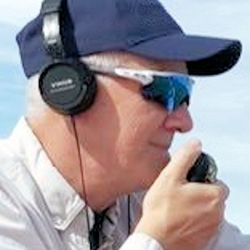
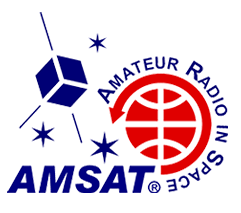 would provide opportunities to engage with astronauts in lunar and deep-space operations.
would provide opportunities to engage with astronauts in lunar and deep-space operations..jpg) case of Classic and Rookie entries. Plaques will be available for winners in this category.
case of Classic and Rookie entries. Plaques will be available for winners in this category.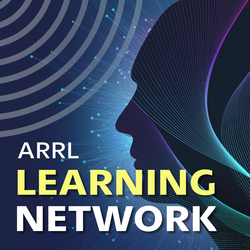 Introduction to DMR and Digital Voice -- Tim Deagan, KJ8U / Thursday, September 9, 2021 at 3:30 PM EDT (1930 UTC)
Introduction to DMR and Digital Voice -- Tim Deagan, KJ8U / Thursday, September 9, 2021 at 3:30 PM EDT (1930 UTC)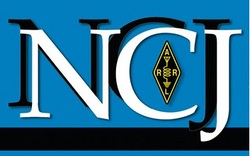 NCJ's North American QSO Parties will recognize Youth entries in the Single Operator category. Beginning with the NAQP CW (August 7 - 8) and the NAQP SSB (August 21 - 22), a Youth checkbox will be added on
NCJ's North American QSO Parties will recognize Youth entries in the Single Operator category. Beginning with the NAQP CW (August 7 - 8) and the NAQP SSB (August 21 - 22), a Youth checkbox will be added on (1).jpg) Special event station HS18IARU is now active on all bands. Thailand's National Broadcasting and Telecommunications Commission (NBTC) granted the call sign to promote the 18th International Amateur Radio Union (
Special event station HS18IARU is now active on all bands. Thailand's National Broadcasting and Telecommunications Commission (NBTC) granted the call sign to promote the 18th International Amateur Radio Union (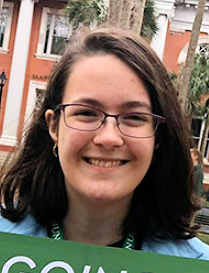 was invited to join the 2016 Dave Kalter Memorial Youth DX team, which operated from the Saba station of Jeff Jolie, as PJ6/NM1Y.
was invited to join the 2016 Dave Kalter Memorial Youth DX team, which operated from the Saba station of Jeff Jolie, as PJ6/NM1Y. Electronics Notes has begun to develop a
Electronics Notes has begun to develop a 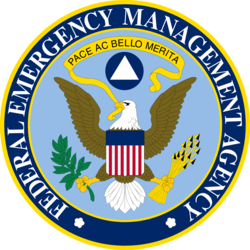 FEMA, in coordination with the FCC, will conduct a nationwide test of the Emergency Alert System (EAS) and Wireless Emergency Alerts (WEA) this month. The national test will consist of two segments, to test EAS and WEA. Both tests are set to begin at 1820 UTC on Wednesday, August 11. The WEA portion of the test will be directed only to consumer cell phones where the subscriber has opted to receive test messages. The EAS portion of the test will be sent to radios and televisions. This will mark the sixth nationwide EAS test. The purpose of the August 11 test is to ensure that the EAS and WEA systems continue to be effective means of warning the public about emergencies.
FEMA, in coordination with the FCC, will conduct a nationwide test of the Emergency Alert System (EAS) and Wireless Emergency Alerts (WEA) this month. The national test will consist of two segments, to test EAS and WEA. Both tests are set to begin at 1820 UTC on Wednesday, August 11. The WEA portion of the test will be directed only to consumer cell phones where the subscriber has opted to receive test messages. The EAS portion of the test will be sent to radios and televisions. This will mark the sixth nationwide EAS test. The purpose of the August 11 test is to ensure that the EAS and WEA systems continue to be effective means of warning the public about emergencies.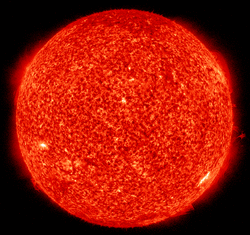 Sunspots were gone July 28 - August 1, so the average daily sunspot number dropped from 33.1 last week to 6 this week. The average daily solar flux slipped from 83 to 74.8.
Sunspots were gone July 28 - August 1, so the average daily sunspot number dropped from 33.1 last week to 6 this week. The average daily solar flux slipped from 83 to 74.8.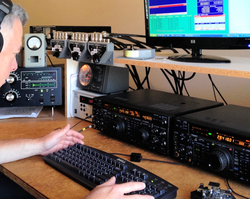 August 7 -- FISTS Saturday Sprint (CW)
August 7 -- FISTS Saturday Sprint (CW).jpg)








